Newsletter – August 2018
PRESIDENT’S COLUMN
Postcards from the Mediterranean: Groundwater, Glaciers, and Geopark
By Sheryl Luzzadder-Beach
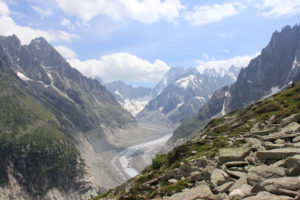
One of the enduring themes for AAG Annual Meetings is Geography, Science, and Human Rights. We will continue to incorporate this nexus of human and physical geography, and GIScience, into the 2019 AAG annual meeting as a major theme. Understanding and teaching the right to benefit from science is more important now than ever. We inhabit a world of political uncertainty but growing scientific certainty, a time where the U.S. Endangered Species Act is currently under attack, and a planet where coastal villages are threatened by icebergs from Glaciers breaking up due to global warming, at the same time that communities ranging from Athens Greece to Yosemite and Redding, California are ravaged by fires stoked by record summer heat.
Read past columns from the current AAG President on our President’s Column page.
ANNUAL MEETING
New Annual Meeting Fee Structure Implemented for #aagDC

As the AAG annual meeting has continued to grow, so has the number of concurrent sessions. In order to improve the planning, implementation, and attendee experience at the meeting, the AAG has adjusted the way registration is organized. Rates will now be based on participation type: attendees who will be participating in Paper and Panel sessions must register under the “Regular” category and those involved in Poster sessions or not presenting will qualify for “Discounted” rates. Registration opens soon!
Learn more about the new fees.

“Focus on Washington, DC and the Mid Atlantic” is an ongoing series curated by the Local Arrangements Committee to provide insight on and understanding of the geographies of Washington, DC and the greater Mid Atlantic region in preparation for the 2019 AAG Annual Meeting.
The National Mall: Making Space for the Dream
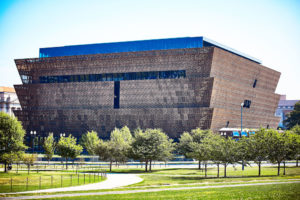
One of the more familiar features of Washington, DC is the National Mall, a public greenspace of over 1,000 acres maintained by the US National Park Service. Author of the book The National Mall: No Ordinary Public Space, Lisa Benton-Short, gives an insider look at some of the new features like the National Museum of African American History and Culture, the Martin Luther King, Jr. memorial, and the National Museum of the American Indian for #aagDC attendees.
ASSOCIATION NEWS
NCRGE Funds Research Networks on Geography and Civics, Geo-Computation, and International Curriculum Research
 A third cohort of grantees were recently approved by the National Center for Research in Geographic Education to conduct research as part of the Transformative Research grant program. The NCRGE program was developed to support the implementation of recommendations outlined by the Roadmap for 21st Century Geography Education project. These initiatives will seek to improve geography education and learning in the areas of geo-computation, redistricting, and international curriculum.
A third cohort of grantees were recently approved by the National Center for Research in Geographic Education to conduct research as part of the Transformative Research grant program. The NCRGE program was developed to support the implementation of recommendations outlined by the Roadmap for 21st Century Geography Education project. These initiatives will seek to improve geography education and learning in the areas of geo-computation, redistricting, and international curriculum.
AAG Welcomes Zan Dodson, Director, Program Management & Research
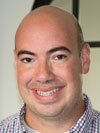 The AAG welcomes Zan Dodson as Director, Program Management & Research. Prior to the AAG, he was a postdoctoral associate for three years in the Public Health Dynamics Laboratory at the University of Pittsburgh and Adjunct Faculty at Carnegie Mellon University. Zan will be working on the AAG research program and with the AAG management team to support the Association.
The AAG welcomes Zan Dodson as Director, Program Management & Research. Prior to the AAG, he was a postdoctoral associate for three years in the Public Health Dynamics Laboratory at the University of Pittsburgh and Adjunct Faculty at Carnegie Mellon University. Zan will be working on the AAG research program and with the AAG management team to support the Association.
Meet the Editors of AAG Journals: Kent Mathewson and Robert Perham
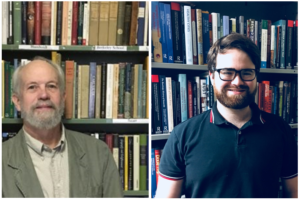 An editorial team consisting of an editor-in-chief and an editorial assistant works on the AAG Review of Books. Published quarterly, the AAG Review of Books was launched in 2013 to centralize the publishing of scholarly book reviews formerly published in other AAG journals. Kent Mathewson has been serving as the editor-in-chief since the inception of the journal and Robert Perham recently completed a position as an assistant for the review.
An editorial team consisting of an editor-in-chief and an editorial assistant works on the AAG Review of Books. Published quarterly, the AAG Review of Books was launched in 2013 to centralize the publishing of scholarly book reviews formerly published in other AAG journals. Kent Mathewson has been serving as the editor-in-chief since the inception of the journal and Robert Perham recently completed a position as an assistant for the review.
Find out more about the AAG Journals editors.
MEMBER NEWS
Profiles of Professional Geographers
John Sauvageau is the professional geographer featured this month in our Profiles of Professional Geographers spotlight. As a Vice President – Senior Branch Channel Market Planner for Citizens Bank, Sauvageau uses his GIS training to assist in site selection for bank branches and ATMs. For geographers, combining a passion for an industry with geographical training opens many doors for careers!
Learn more about geography careers.
Anne U. White Grant Recipient publishes new book
Dr. Shouraseni Sen Roy, recipient of a grant from the Anne U. White Fund at the AAG, recently published a new book entitled “Linking Gender to Climate Change Impacts in the Global South.” The research for the book was largely collected using money received from the White Fund. The White Fund was established in 1989 to support geographers conducting field work alongside their partners.
RESOURCES & OPPORTUNITIES
AAG Releases New 2017-2018 Edition of The Guide
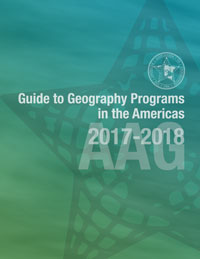 The AAG’s Guide to Geography Programs in the Americas, or The Guide, includes detailed information on undergraduate and graduate geography programs in the United States, Canada, and Latin America, including degree requirements, curricula, faculty qualifications, program specialties, financial assistance, and degrees completed, and more. The 2017-2018 edition of The Guide is now available for free online. The AAG has also published an interactive, companion map where users can search for programs by location, degree type, field of interest, and regional focus.
The AAG’s Guide to Geography Programs in the Americas, or The Guide, includes detailed information on undergraduate and graduate geography programs in the United States, Canada, and Latin America, including degree requirements, curricula, faculty qualifications, program specialties, financial assistance, and degrees completed, and more. The 2017-2018 edition of The Guide is now available for free online. The AAG has also published an interactive, companion map where users can search for programs by location, degree type, field of interest, and regional focus.
Nominate Inspiring Geographers: September Awards Deadlines

AAG Grants and Awards make a huge impact on our community of Geographers and help maintain the legacy of geographers of the past while paying tribute to geographers thriving right now. September deadlines are approaching fast. Don’t miss your opportunity to apply or nominate someone deserving! Learn more about the following grants and awards before their due dates:
Sept. 15: AAG Enhancing Diversity Award and AAG Susan Hardwick Excellence in Mentoring Award
Sept. 22: AAG Nystrom Award for Recent Dissertations
IN MEMORIAM
Peter Meusburger
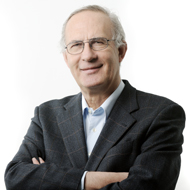 The AAG is saddened to hear of the passing of Peter Meusburger, a professor of human geography at the University of Heidelberg. Meusburger passed away on December 18, 2017 at 75 years of age. Serving as the president of the German Geography Society from 2001-2003, Meusburger was also awarded the AAG Presidential Achievement Award in 2010, one of many accolades.
The AAG is saddened to hear of the passing of Peter Meusburger, a professor of human geography at the University of Heidelberg. Meusburger passed away on December 18, 2017 at 75 years of age. Serving as the president of the German Geography Society from 2001-2003, Meusburger was also awarded the AAG Presidential Achievement Award in 2010, one of many accolades.
PUBLICATIONS
Summer 2018 Issue of ‘The AAG Review of Books’ Now Available

Volume 6, Issue 3 of The AAG Review of Books has now been published online. In addition to featuring individual book reviews and discussions, the quarterly publication also includes longer essays on several books dealing with a particular theme. This quarter, the essay by Joseph S. Wood looks at the white, rural poor in the US.
New Books in Geography — June 2018 Available

Each month the AAG publishes a list of new books in geography and related disciplines to help members keep up with the latest in published research. The June 2018 list of new books is now available online and includes works on topics related to climate change, ice, immigration, geopolitics and more!
Read the July 2018 Issue of the ‘Annals of the AAG’
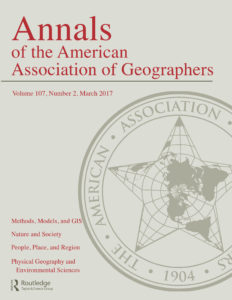
The Annals of the American Association of Geographers is published six times a year. Issue 4 of Volume 108 is now available to read online as part of the AAG membership benefits. This issue features an editors’ choice article on the racial nature of gerrymandering in the US.
Full article listing available.
Volume 4, Issue 1 of ‘GeoHumanities’ Online Now
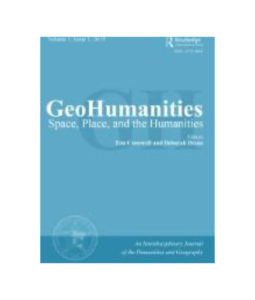 GeoHumanities features articles that span conceptual and methodological debates in geography and the humanities; critical reflections on analog and digital artistic productions; and new scholarly interactions occurring at the intersections of geography and multiple humanities disciplines. There are full length scholarly articles in the Articles section and shorter creative pieces that cross over between the academy and creative practice in the Practices and Curations section.
GeoHumanities features articles that span conceptual and methodological debates in geography and the humanities; critical reflections on analog and digital artistic productions; and new scholarly interactions occurring at the intersections of geography and multiple humanities disciplines. There are full length scholarly articles in the Articles section and shorter creative pieces that cross over between the academy and creative practice in the Practices and Curations section.
May 2018 Issue of the ‘Professional Geographer’ Published

The Professional Geographer, Volume 70, Issue 2, has been published. Of note to geographers interested in the Public Engagement theme for #AAG2018, the focus section in this issue is Out in the World: Geography’s Complex Relationship with Civic Engagement. The issue also includes short articles in academic or applied geography, emphasizing empirical studies and methodologies.
GEOGRAPHERS IN THE NEWS
- Geographers at Sam Houston State University lead award winning field course in Hawaii
- Cartographer and PhD Student Annita Lucchesi seeks Indigenous gone missing in US and Canada
- Glen MacDonald responds to claims about California wildfires
EVENTS CALENDAR
- August 6-10, 2018 – International Geographical Union Conference
- August 12, 2018 – Deadline to apply to NSF Coastlines and People Scoping Sessions
Submit News to the AAG Newsletter. To share your news, email us!
 The AAG welcomes Zan Dodson as Director, Program Management & Research. Prior to the AAG, he was a postdoctoral associate for three years in the Public Health Dynamics Laboratory at the University of Pittsburgh and Adjunct Faculty at Carnegie Mellon University. He has taught numerous courses in geography ranging from cultural and regional geography, to qualitative methods, to GIS and remote sensing, and has served as both an undergraduate and graduate advisor.
The AAG welcomes Zan Dodson as Director, Program Management & Research. Prior to the AAG, he was a postdoctoral associate for three years in the Public Health Dynamics Laboratory at the University of Pittsburgh and Adjunct Faculty at Carnegie Mellon University. He has taught numerous courses in geography ranging from cultural and regional geography, to qualitative methods, to GIS and remote sensing, and has served as both an undergraduate and graduate advisor.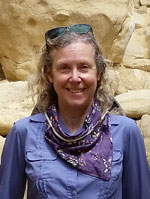
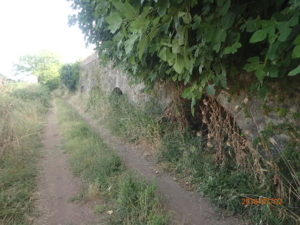
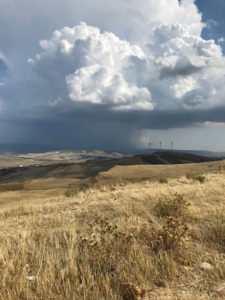
 This column begins with special thanks and recognition of our outgoing President Dr. Derek Alderman, and outgoing Past President Dr. Glen MacDonald. Please join me in recognizing their leadership in moving the association forward on so many important fronts, ranging from civil rights to environmental security. We must carry this momentum forward from the strong foundations they established, and I am honored to take up the baton as your new AAG president… In my first presidential column, I address a matter of human rights and global understanding, to which geographers have much to contribute.
This column begins with special thanks and recognition of our outgoing President Dr. Derek Alderman, and outgoing Past President Dr. Glen MacDonald. Please join me in recognizing their leadership in moving the association forward on so many important fronts, ranging from civil rights to environmental security. We must carry this momentum forward from the strong foundations they established, and I am honored to take up the baton as your new AAG president… In my first presidential column, I address a matter of human rights and global understanding, to which geographers have much to contribute. The official #aagDC conference hotels are now open for reservations. As you prepare to travel to Washington, DC, explore the Marriott Wardman Park and the Omni Shoreham – the co-headquarters for the 2019 AAG Annual Meeting. The Marriott and Omni are conveniently located directly across the street from each other in DC’s Woodley Park neighborhood. #aagDC will overlap with DC’s renowned Cherry Blossom Festival, which attracts more than a million tourists each year. Because of this, AAG has reserved a block of discounted rooms for Annual Meeting attendees.
The official #aagDC conference hotels are now open for reservations. As you prepare to travel to Washington, DC, explore the Marriott Wardman Park and the Omni Shoreham – the co-headquarters for the 2019 AAG Annual Meeting. The Marriott and Omni are conveniently located directly across the street from each other in DC’s Woodley Park neighborhood. #aagDC will overlap with DC’s renowned Cherry Blossom Festival, which attracts more than a million tourists each year. Because of this, AAG has reserved a block of discounted rooms for Annual Meeting attendees.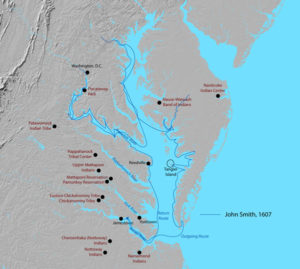
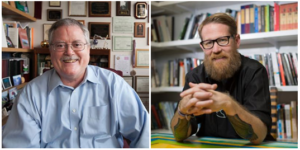
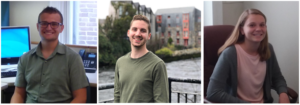 The AAG is pleased to have three interns join the AAG staff this summer. Alex Lafler, a junior at Michigan State University, is pursuing a BS in Geographic Information Science and a BA in Human Geography (along with a Minor in Environment and Health), Christian Meoli, a senior at the University of Mary Washington, is double majoring in Geography and Environmental Science with a certificate in GIS, and Jenny Roepe, a senior at Virginia Polytechnic Institute and State University, is pursuing a B.A. in geography with a minor in geographical information systems and urban and public issues.
The AAG is pleased to have three interns join the AAG staff this summer. Alex Lafler, a junior at Michigan State University, is pursuing a BS in Geographic Information Science and a BA in Human Geography (along with a Minor in Environment and Health), Christian Meoli, a senior at the University of Mary Washington, is double majoring in Geography and Environmental Science with a certificate in GIS, and Jenny Roepe, a senior at Virginia Polytechnic Institute and State University, is pursuing a B.A. in geography with a minor in geographical information systems and urban and public issues. The AAG is excited to announce that the first 30 of 308 films in the Geographers on Film series have been digitized and are now available online from the Library of Congress. Geographers on Film is a collection of recorded video interviews conducted with hundreds of geographers between August 1970 and the mid-1980s, including scholars who have shaped the discipline such as Carl Sauer, Richard Hartshorne, Wilbur Zelinsky, Richard Chorley, Mildred Berman, Harold Rose, Jan Monk, Yi-Fu Tuan and Rickie Sanders. The late Maynard Weston Dow (1929 – 2011), Professor Emeritus at Plymouth State College, and Nancy Dow largely produced the series over 40 years.
The AAG is excited to announce that the first 30 of 308 films in the Geographers on Film series have been digitized and are now available online from the Library of Congress. Geographers on Film is a collection of recorded video interviews conducted with hundreds of geographers between August 1970 and the mid-1980s, including scholars who have shaped the discipline such as Carl Sauer, Richard Hartshorne, Wilbur Zelinsky, Richard Chorley, Mildred Berman, Harold Rose, Jan Monk, Yi-Fu Tuan and Rickie Sanders. The late Maynard Weston Dow (1929 – 2011), Professor Emeritus at Plymouth State College, and Nancy Dow largely produced the series over 40 years.
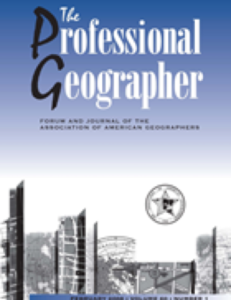
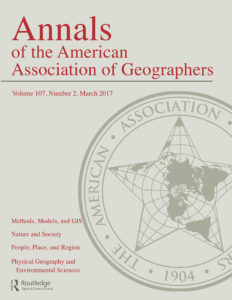
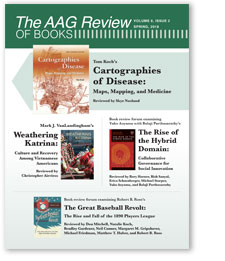 Volume 6, Issue 2 of the quarterly The AAG Review of Books has now been published online. In addition to scholarly reviews of recent books related to geography, public policy and international affairs, this issue features longer book review fora of Refugees in Extended Exile: Living on the Edge, The Rise of the Hybrid Domain: Collaborative Governance for Social Innovation, and The Great Baseball Revolt: The Rise and Fall of the 1890 Players League.
Volume 6, Issue 2 of the quarterly The AAG Review of Books has now been published online. In addition to scholarly reviews of recent books related to geography, public policy and international affairs, this issue features longer book review fora of Refugees in Extended Exile: Living on the Edge, The Rise of the Hybrid Domain: Collaborative Governance for Social Innovation, and The Great Baseball Revolt: The Rise and Fall of the 1890 Players League.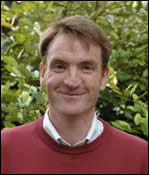
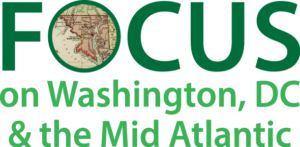 When Captain John Smith sailed up the Potomac River in 1608, he found 13 American Indian villages along its banks. Spanish incursions beginning in 1521 brought diseases, land grabs, resource destruction, military assaults, and slave raids. Nonetheless, there were several large villages and fortified towns by the time of John Smith’s 1608 visit. At that time, three major political groups vied for power in the region: the Susquehannock in Pennsylvania; the Piscataway Chiefdom in southern Maryland; and the Powhatan Chiefdom in Virginia and farther south.
When Captain John Smith sailed up the Potomac River in 1608, he found 13 American Indian villages along its banks. Spanish incursions beginning in 1521 brought diseases, land grabs, resource destruction, military assaults, and slave raids. Nonetheless, there were several large villages and fortified towns by the time of John Smith’s 1608 visit. At that time, three major political groups vied for power in the region: the Susquehannock in Pennsylvania; the Piscataway Chiefdom in southern Maryland; and the Powhatan Chiefdom in Virginia and farther south.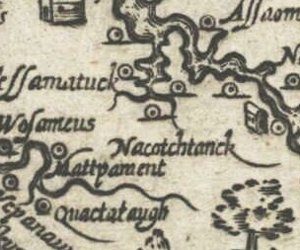
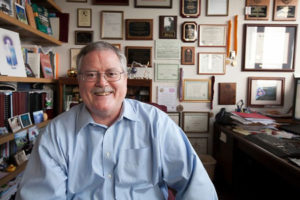 The Physical Geography, Earth and Environmental Sciences section editor of the Annals of the American Association of Geographers is David Butler. Butler is a Texas State University System Regents’ Professor in the Department of Geography at Texas State University where he teaches courses on geomorphology, landscape biogeography, biogeomorphology, and Nature and Philosophy of Geography. With research interests that include geomorphology, biogeography, natural hazards, mountain environments and environmental change, Butler has considerable experience working with physical geography topics. He has also been the recipient of several awards during his career including the Distinguished Career Award from the Biogeography Specialty Group, the Geomorphology Specialty Group, and the Mountain Geography Specialty Group of the AAG as well as a variety of teaching and mentoring awards.
The Physical Geography, Earth and Environmental Sciences section editor of the Annals of the American Association of Geographers is David Butler. Butler is a Texas State University System Regents’ Professor in the Department of Geography at Texas State University where he teaches courses on geomorphology, landscape biogeography, biogeomorphology, and Nature and Philosophy of Geography. With research interests that include geomorphology, biogeography, natural hazards, mountain environments and environmental change, Butler has considerable experience working with physical geography topics. He has also been the recipient of several awards during his career including the Distinguished Career Award from the Biogeography Specialty Group, the Geomorphology Specialty Group, and the Mountain Geography Specialty Group of the AAG as well as a variety of teaching and mentoring awards. Nik Heynen is the Human Geography editor for the Annals of the American Association of Geographers, a Professor in the Department of Geography at the University of Georgia, and an adjunct Professor in the Department of Anthropology. At the University of Georgia, Heynen teaches mostly large introductory classes, in addition to graduate seminars.
Nik Heynen is the Human Geography editor for the Annals of the American Association of Geographers, a Professor in the Department of Geography at the University of Georgia, and an adjunct Professor in the Department of Anthropology. At the University of Georgia, Heynen teaches mostly large introductory classes, in addition to graduate seminars.